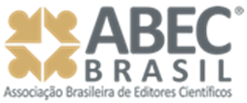Desenvolvimento vegetativo das colônias em Aspergillus nidulans é controlado por genes regulados por metilação
DOI:
https://doi.org/10.54372/sb.2025.v20.2270Palavras-chave:
Desenvolvimento vegetativo, Produção de melanina, Coloração de conídios, 5-azacitidina, EpigenéticaResumo
Grandes avanços têm sido alcançados no conhecimento dos mecanismos genéticos de controle dos processos de desenvolvimento dos mais variados organismos. Nas últimas décadas, uma nova abordagem tem sido tomada para o estudo do controle da expressão gênica no contexto da Epigenética. Este trabalho avaliou a presença de genes regulados por metilação no controle do ciclo vegetativo e da morfologia da colônia em Aspergillus nidulas. Conídios de 5 dias foram inoculados em placas com meio mínimo suplementado e meio mínimo suplementado com adição de 5-azacitidina. Para análise do ciclo vegetativo foram feitas medidas diárias do diâmetro das colônias e observou-se a morfologia das colônias, a coloração de conídios e a coloração do reverso das placas. Em presença do desmetilante, as colônias apresentaram muitos setores com excesso de melanina e diminuição da quantidade de conidióforos. Foi possível observar que em A. nidulans existem genes para o desenvolvimento vegetativo que podem ser regulados por metilação, como os genes para produção e secreção de melanina. Também foram observados genes que são metilados ocasionalmente e de forma transitória, como os genes para coloração de conídios.
Referências
(1) ELLIOT, C.G. The cytology of Aspergillus nidulans. Genetical Research, v. 1, p. 462-476. 1960.
(2) PONTECORVO, G.; ROPER, J.A.; HEMMONS, L.M.; MACDONALD, K.D.; BUFTON, A.W.J. The genetics of Aspergillus nidulans. Advances in Genetics. V. 5, p. 141-238. 1953.
(3) CLUTTERBUCK, A.J.; TIMBERLAKE, W.E. Genetic regulation of sporulation in the fungus Aspergillus nidulans. In: RUSSO, V.E.A.; BRODY, S.; COVE, D.; OTTOLONGHI, S. Development. London: Spring-Verlog, 2005. p. 103-118.
(4) ADAMS, T.H.; HIDE, W.A.; YAGER, L.N.; LEE, B.N. Isolation of a gene required for programmed initiation of development by Aspergillus nidulans. Molecular and Cellular Biology, v. 12, p. 3827-33. 1992.
(5) MORRIS, N.R. Mitotic mutants of Aspergillus nidulans. Genetical Research. v. 26, p. 237-54. 1976.
(6) AXEROLD, D.E.; Kinects of differentiation of conidiophores and conidia by colonies of Aspergillus nidulans. Journal of General Microbiology. v. 73, p. 181-184. 1972.
(7) MORRIS, N.R.; XIANG, X.; BECKWITH, S.M. Nuclear migration advances in fungi. Trends Cellular Biology. V.5, p. 278-282. 1995.
(8) TIMBERLAKE, W.E.; CLUTTERBUCK, A. J. Genetic regulation of conidiation. In: MARTINELLI, S.D.; KINGHORN, J.R. ed. Aspergillus: 50 years on. London: Elservier, 1994. p. 383-427.
(9) SHERMAM, J. M.; PILLUS, L. An uncertain silence. Trands in Genetics, v.13, p. 308-313. 1997.
(10) SZYF, M.; ELIASSON, L.; MANN, V.; KLEI, G.; RAZIN, A. Cellular and viral DNA hypometilation associated with induction of Epstein-Barr virus lytic cycle. Proceedings of the National Academy of Sciences of the United States of America, v. 82, p. 8090-8094. 1985.
(11) HUH. J.H; BAUER. M.J; HSIEH. T.; FISCHER. R.L. Cellular Programming of Plant Gene. Cell, v. 172, p. 735-744. 2008.
(12) ZHANG, M.; KIMATU, J. N.; XU. K.; LIU. B. DNA cytosine methylation in plant development. Journal of Genetics and Genomics, v. 37 n. 1, p. 1-12. 2010.
(13) ANTEQUERA, F.; TAMAME, M.; VILLANUEVA, J.R.; SANTOS, T. DNA methylation in the fungi. The Journal of Biological Chemistry, v. 259, p. 8033-8036. 1984.
(14) LEE, D.W.; FREITAG, M.; SELKER, E.U.; ARAMAYO, R.. A cytosine methyltransferase homologue is essential for sexual development in Aspergillus nidulans. PLoS ONE, v. 3, p. 2531. 2008.
(15) CLUTTERBUCK, A.J. Aspergillus nidulans. In: KING, R.C. (Ed.). Handbook of Genetics. New York: Plenum Publishing, 1974. p. 447-510.
(16) SELKER, E. U.; CAMBARERI, E. B.; JENSENS, B. C.; HAACK, K. R. Rearrangement of duplicated DNA in specialized cells of Neurospora. Cell, v.51, p. 741–752. 1987.
(17) CASTRO-PRADO, M. A. A. ; ZUCCHI, T. M. A. D. A gene inactivation system (gis) acting in meiosis of a duplicated strain of aspergillus nidulans. Brazilian journal of genetics, v. 19, n. 1, p. 17-23. 1996.
(18) ZHADANOVA, N.N.; BORISYUK ,L.G.; ARTZATBANOV, V.Y. Ocurrence of the K type of life strategy in some melanin- containing fungi under experimental conditions. Folia Microbiologica, v. 35, p. 423–430. 1990.
(19) BELL, A.A.; WHEELER, M.H. Biosyntesis and functions of fungal melanins. Annual Review of Phytopathology, v. 24, p. 411–451. 1986.
(20) FOGARTY, R.V.; TOBIN, J.M. Fungal melanins and their interactions with metals. Enzyme Microbial Technology, V.19, p. 311–317. 1996.
(21) BUTLER, M.J.; DAY A.W. Fungal melanins: a review. Canadian Journal of Microbiology, v. 44, p. 1115–1136. 1998.
(22) JACOBSON, E.S. Pathogenic roles for fungal melanins. Clinical Microbiology Reviews, v. 13, p. 708–717. 2000.
(23) GARCIA-RIVERA, J.; CASADEVALL, A. Melanization of Cryptococcus Neoformans reduces its susceptibility to the antimicrobial effects of silver nitrate. Medical Mycology, v. 39, p. 353-357. 2001.
(24) GÓMEZ, B.; NOSANCHUK, J.D. Melanin and fungi. Current Opinion Infectious Diseases, v. 16, p. 91–96. 2003.
(25) DADACHOVA E.; BRYAN, R.A.; HUANG, X.; MOADEL, T.; SCHWEITZER, A.D.; AISEN, P.; NOSANCHUK, J.D.; CASADEVALL, A. Ionizing radiation changes the electronic properties of melanin and enhances the growth of melanized fungi. PLoS ONE, v. 2, n. 5, e457. 2007.
(26) SINGARAVELAN, N.; GRISHKAN, I.; BEHARAV, A., WAKAMATSU, K.; ITO ,S.; NEVO, E. Adaptive melanin response of the soil fungus Aspergillus niger to UV radiation stress at ‘‘evolution canyon’’. Mount Carmel, Israel. PLoS ONE, v. 3, n. 8, e2993. 2008.
(27) CLUTTERBUCK, A.J.The genetics of conidiation in Aspergillus nidulans. In: PATEMAN, J.A.; SMITH, J.E. (ed). Genetics and physiology of Aspergillus. New York: Academic Press. 1977. 305-17.
(28) GRIFFITH, G.H.; JENKINS, G.I.; MILNER-WHITE, E.J.; CLUTTERBUCK, A.J. Homology at the amino acid level between plant phytochromes and a regulator of asexual sporulation in Emericella (=Aspergillus) nidulans. Photochemistry and Photobiology, v. 59, p. 252-256. 1994.
(29) CHAMPE, S. P.; RAO, P.; CHANG, A. An endogenous inducer of sexual development in Aspergillus nidulans. Journal of General Microbiology, v. 133, p. 1383-1387. 1987.
(30) MAZUR, P.; MEYERS, H.V.; NAKANISHI, K; EL-ZAYAT, E.A.A.; CHAMPE, S.P. Structural elucidation of sporogenic fatty acid metabolites in Aspergillus nidulans, Tetrahedron Letters, v. 31, p. 3837-3840. 1990.
(31) MAZUR, P.; MEYERS, H.V.; NAKANISHI, K; CHAMPE, S.P. Structure and synthesis of sporogenic psi factors from Aspergillus nidulans. Journal of the chemical society, chemical communications, p.1486-87. 1991.
(32) BUTNICK, N.Z.; YAGER, L.N.; HERMANN, T.E.; KURTZ, M.B.; CHAMPE, S.P. Mutants of Aspergillus nidulans blocked at early stage of sporulation secreteun anusual metabolite. Journal of Bacteriology, v. 160, p. 533-34. 1984b.
(33) CLUTTERBUCK, A. J. Absence of laccase from yellowspored mutants of Aspergillus nidulans. Journal of General Microbiology, v. 70, p. 423-435. 1972.
Downloads
Publicado
Como Citar
Edição
Seção
Licença
Copyright (c) 2025 SaBios-Revista de Saúde e Biologia

Este trabalho está licenciado sob uma licença Creative Commons Attribution-NonCommercial 4.0 International License.
Direitos Autorais para artigos publicados nesta revista são cedidos pelo autor à SaBios-Revista de Saúde e Biologia, que está autorizada a publicá-lo em meio impresso, digital, ou outro existente, sem retribuição financeira para os autores. Em virtude da aparecerem nesta revista de acesso público, os artigos são de uso gratuito, com atribuições próprias, em aplicações educacionais e não-comerciais.
Copyright of articles published in this journal are transferred by the author to SaBios-Journal of Health and Biology, which is authorized to publish them in printed, digital or other existing way, without financial reward for authors. Considering that articles appear in this public accessed journal, they are free to be used in educational and non-commercial applications.




















